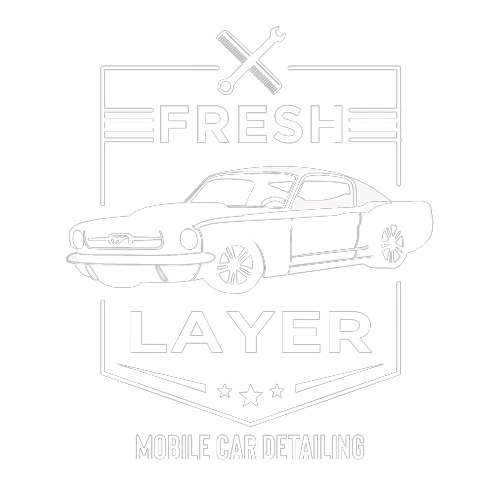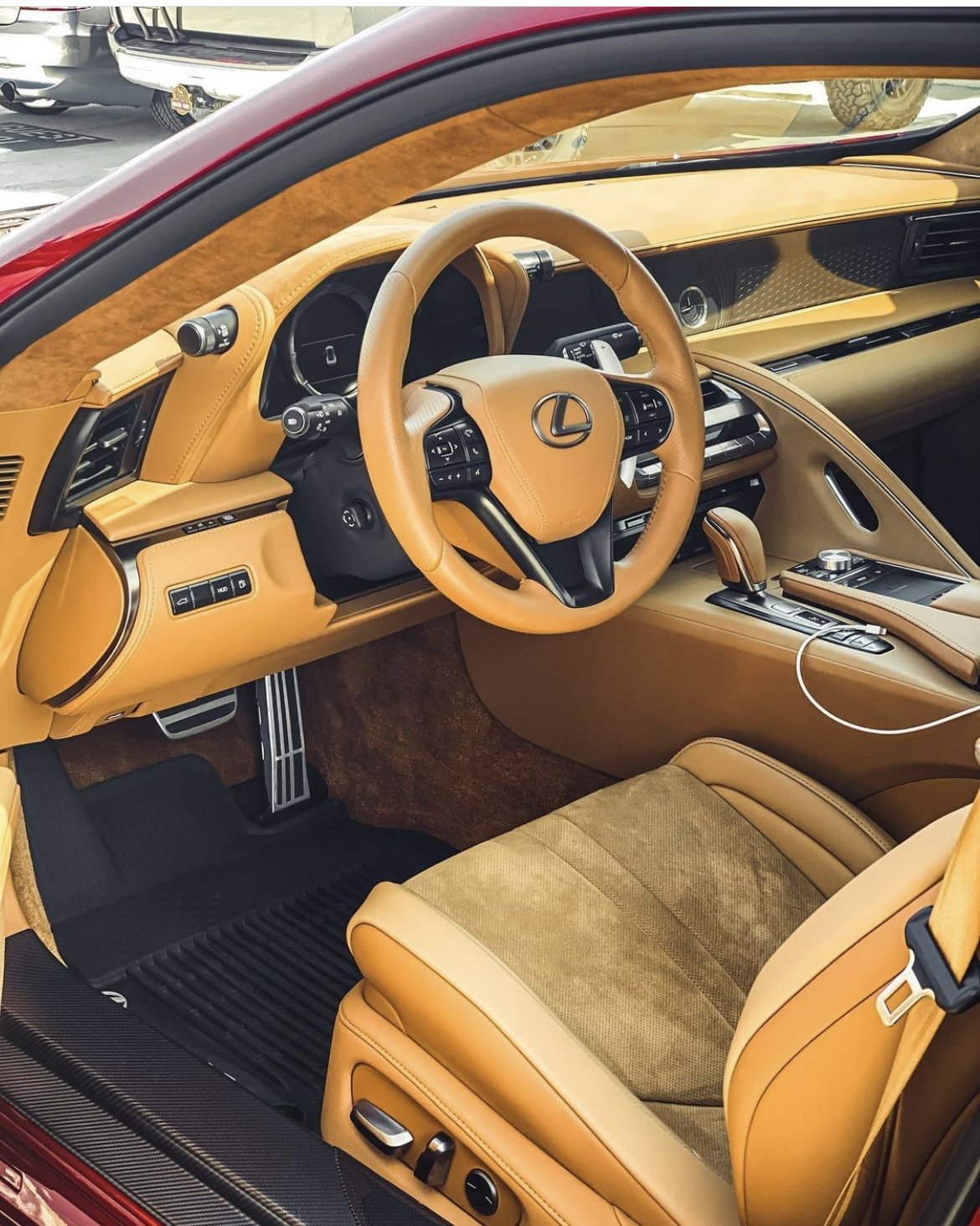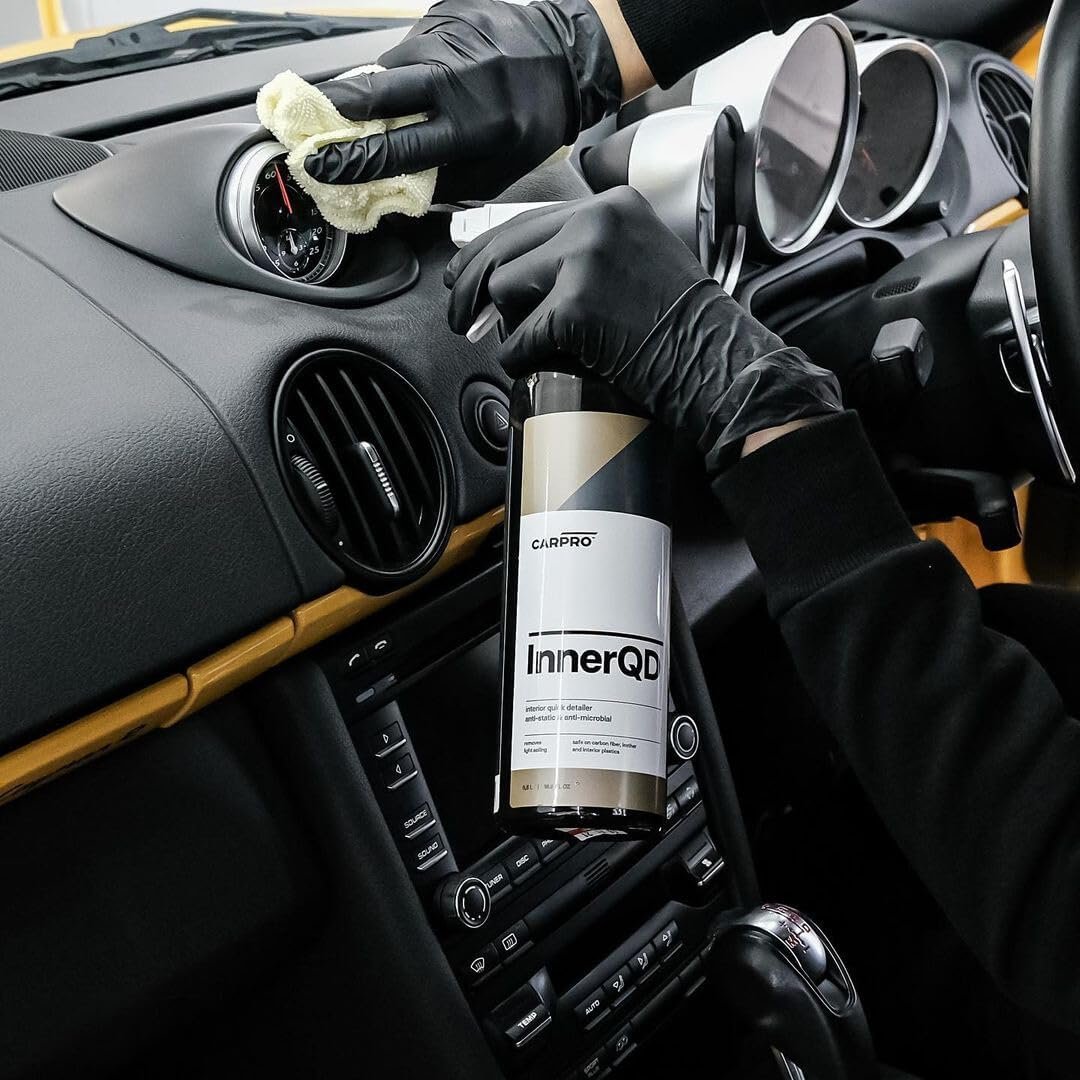Interior Car Detailing Why is Metter
When it comes to maintaining a vehicle, the importance of interior car detailing cannot be overstated. The exterior of your vehicle may set the first impression others will get of you and what you drive, the interior is going to be your second home.
It will be where you and your passengers interact with the world and each other, and like the inside of your house, its cleanliness can have a definitive effect on your mood and how much enjoyment you get in your day-to-day journeys.
When a professional team works diligently to make sure the interior is as spotless and as fresh as possible, however, you may want to know just what you’re getting for your money.
What services are they performing to ensure your car looks as great inside as it does out?
The significance of interior detailing lies in its ability to not only clean but also protect. The cabin of a vehicle is subject to constant wear and tear - spills, stains, UV rays, and even the oils from our skin can gradually degrade different materials, from leather seats to plastic dashboards.
Proper detailing involves using specialized products and techniques to protect these materials, prolonging their life and maintaining the vehicle’s aesthetic and functional quality.
What Is Interior Car Detailing?
Definition
Interior car detailing is the comprehensive cleaning and restoration of your vehicle’s cabin. It involves specialized tools, techniques, and products to achieve a spotless and sanitized interior.
Key Components of Interior Detailing
Vacuuming: Removes dirt, dust, and debris from carpets, seats, and floor mats.
Shampooing and Steam Cleaning: Tackles stains and odors on upholstery and carpets.
Leather Conditioning: Cleans, conditions, and protects leather surfaces from cracking and fading.
Plastic and Vinyl Cleaning: Restores dashboards, door panels, and center consoles.
Glass Cleaning: Ensures streak-free windows and mirrors for improved visibility.
Odor Removal: Uses ozone treatments or deodorizers to eliminate unpleasant smells.
Detailed Explanation of Interior Car Detailing
Interior car detailing involves several key steps and techniques. These typically include:
Vacuuming: The first step usually involves vacuuming all areas of the car’s interior, including seats, carpets, mats, and hard-to-reach areas to remove loose dirt and debris.
Shampooing and Steam Cleaning: This step involves deep cleaning of the carpets and upholstery to remove stains and odors. Steam cleaning can also be used for more effective results.
Leather Cleaning and Conditioning: If the car has leather components, these are carefully cleaned with a leather cleaner and then conditioned to prevent cracking and fading.
Cleaning and Polishing Hard Surfaces: This includes the dashboard, center console, door panels, and other hard surfaces. These areas are cleaned to remove dust and grime and then polished for a fresh look.
Window Cleaning: Interior windows and mirrors are cleaned for clarity and streak-free visibility.
Odor Removal: A thorough detailing also includes neutralizing any unpleasant odors and leaving the car with a fresh scent.
Difference Between Basic Cleaning and Professional Detailing
The primary difference between basic cleaning and professional interior car detailing lies in the level of depth and attention to detail.
Basic Cleaning: This typically involves a quick vacuuming of the floors and seats, wiping down of major surfaces, and a general tidy-up. Basic cleaning is more about surface-level cleanliness and is usually done regularly to maintain a neat appearance.
Professional Detailing: Professional detailing is much more thorough and is aimed at deep cleaning and restoration. It's not just about making the car look clean; it’s about using specialized tools and products to extend the life of the interior materials and improve the overall driving experience. Professional detailers pay attention to every small detail, including areas that are usually not addressed in a basic cleaning, like air vents, under the seats, and crevices in the upholstery.
In summary, interior car detailing is an extensive process that revitalizes and protects the car's interior, ensuring every aspect of the inside is immaculately clean, conditioned, and preserved. It’s a step above basic cleaning, offering long-term benefits for both the vehicle and its passengers.
Interior Car Detailing Pricing
Is initially determined based on the size of the vehicle being addressed:
2-door cars and sedans, being the smallest, are billed at $249
Medium-sized vehicles include 5-seaters, hatchbacks, and SUVs at $269.
Large-scale vehicles include 7-seaters, trucks, and minivans at $289.
Key Components of Interior Car Detailing
Interior car detailing is a meticulous process that involves several crucial steps, each designed to ensure the car's interior is not just clean, but also protected and preserved. Here are some of the key components of this process:
1. Vacuuming and Shampooing
Techniques: Vacuuming is the first step in interior detailing, used to remove loose dirt and debris from carpets, seats, and hard-to-reach areas. A high-powered vacuum with various attachments is typically used to ensure thorough cleaning.
Tools: Besides a standard vacuum, detailers often use a steam cleaner and specialized brushes for deeper cleaning. Shampooing involves using a high-quality car upholstery shampoo to deep-clean fabrics and remove tough stains and odors.
Process: After vacuuming, the carpets and fabric upholstery are shampooed. This may involve a combination of hand scrubbing and machine cleaning to ensure the removal of all dirt and stains.
2. Stain Removal
Strategies: Stain removal requires identifying the type of stain and choosing the appropriate cleaner. For instance, protein-based stains (like food) and tannin stains (from coffee or tea) require different treatment.
Process: The key to effective stain removal is to act quickly and use the right cleaning agents. A gentle blotting action is often more effective than scrubbing, which can embed the stain deeper into the fabric.
3. Leather Treatment
Importance: Leather interiors require special care to prevent cracking, drying out, and fading. Regular conditioning is essential to keep leather soft and supple.
Process: Leather treatment involves cleaning the leather with a pH-neutral leather cleaner to remove dirt and oils, followed by the application of a leather conditioner. This helps maintain the color and texture of the leather, extending its lifespan.
4. Dashboard and Console Cleaning
Tips for Dusting: Dusting the dashboard and console should be done with a microfiber cloth to avoid scratching the surfaces. Using a detailing brush can help remove dust from small crevices and vents.
Polishing: After dusting, a protective polish or dressing can be applied to these areas. This not only makes the dashboard and console look good but also protects them from UV rays and prevents cracking and fading.
Dashboard Cracking ?
In Our Blog post we answer all question about why dashboard is cracking and how to prevend future damages.
The KEY Benefits of Regular Interior Detailing
Regular interior car detailing offers a range of benefits that go far beyond just maintaining a vehicle's aesthetic appeal.
By investing in periodic detailing, car owners can ensure their vehicle remains in excellent condition, both in terms of hygiene and functionality. Here are some of the key benefits:
1. Extending the Life of Your Car's Interior
Protection of Materials: Regular detailing helps protect the various materials inside your car, such as leather, fabric, plastic, and vinyl. Cleaning and conditioning these materials prevent them from drying out, cracking, or fading. For example, leather seats require conditioning to maintain their flexibility and prevent cracks.
Prevention of Wear and Tear: Dirt and grime can lead to increased wear and tear. Regular cleaning ensures that harmful substances are removed, reducing the rate at which the interior components degrade.
Maintaining Value: A well-maintained interior plays a significant role in preserving the resale value of a car. Cars with interiors that are in good condition are more appealing to potential buyers.
2. Health and Hygiene
Removal of Allergens and Bacteria: Cars can accumulate dust, pollen, and other allergens, as well as bacteria and germs. Regular detailing includes thorough cleaning and vacuuming, which helps to remove these potentially harmful substances from your car’s interior.
Improving Air Quality: The cleaning of air vents and changing of air filters during detailing can significantly improve the air quality inside the car. This is particularly beneficial for individuals with allergies or respiratory issues.
Sanitization: Many detailing services now include sanitization processes, especially important in today's health-conscious world, ensuring that surfaces are not just clean but also hygienic.
3. Enhanced Driving Experience
Improved Comfort: A clean and well-maintained interior creates a more comfortable driving experience. Clean seats, a dust-free dashboard, and clear windows make the time spent in the car more pleasant.
Reduced Distractions: A cluttered and dirty car interior can be a distraction to the driver. A clean interior helps in maintaining focus and reduces stress while driving.
Aesthetic Appeal: There’s a sense of pride and satisfaction that comes with driving a car that looks and feels clean. It enhances the overall experience of car ownership and driving.
Choosing the Right Detailing Service
Selecting the right car detailing service is crucial for ensuring the best care for your vehicle's interior.
With numerous options available, it's important to make an informed decision based on several key factors.
Here's what to consider when choosing a detailing service:
Factors to Consider When Selecting a Detailing Service
Experience and Reputation: Look for a service provider with a solid reputation and proven experience. Check online reviews, ask for recommendations, and consider their history in the business.
Range of Services: Ensure the detailing service offers a comprehensive range of services that match your needs. Some might specialize in certain types of vehicles or offer specific detailing packages.
Quality of Products and Equipment: The quality of the products and equipment used in the detailing process directly affects the outcome. Inquire about the types of cleaners, polishes, and equipment they use.
Detailing Techniques: Different services might employ different detailing techniques. Some might be more thorough than others. Understanding their process can give you an insight into the level of detail they provide.
Location and Convenience: Consider the location of the service provider and whether they offer mobile detailing services for added convenience.
Understanding Different Packages and Pricing
Basic vs. Comprehensive Packages: Detailing services often range from basic packages (like a standard clean and vacuum) to more comprehensive options that include deep cleaning, conditioning, and protective treatments.
Customization: Some services offer customizable packages where you can choose specific treatments suited to your car’s needs.
Pricing: Understand the pricing structure. It can vary based on the size of the vehicle, the level of detailing required, and any additional services. Remember, the cheapest option might not always be the best in terms of quality.
Value for Money: Evaluate the cost against the range of services offered. A good detailing service should provide value for the money you are spending.
Common Challenges in Interior Detailing and How to Overcome Them
Interior car detailing can present a few common challenges, each requiring specific strategies to effectively address them.
Here's a look at some of these challenges and how to overcome them:
1. Addressing Hard-to-Remove Odors
Identifying the Source: The first step is to identify the source of the odor. This could be anything from spilled food and drinks to mold growth due to moisture.
Thorough Cleaning: Clean all surfaces and fabrics thoroughly. Sometimes, the odor source might be deep in the upholstery or carpet, requiring deep cleaning or steam cleaning.
Using Odor Neutralizers: After cleaning, use an odor neutralizer specifically designed for vehicles. These are better than regular air fresheners as they don't just mask the smell but neutralize it.
Ventilation and Air Filters: Check and clean the car's ventilation system and replace air filters if necessary, as they can trap odors.
Natural Solutions: For a more natural approach, baking soda can be effective in absorbing odors. Leave an open box in your car overnight, or sprinkle it on the carpets and seats, then vacuum it up.
2. Dealing with Pet Hair and Stubborn Stains
Removing Pet Hair: Pet hair can be particularly challenging to remove. Rubber gloves, pumice stones, or a pet hair brush can help gather and remove hair. Vacuum attachments specifically designed for pet hair are also effective.
Tackling Stubborn Stains: For stubborn stains, it's crucial to use the right cleaning agent. For example, enzyme cleaners are effective for organic stains like food or blood, while mild solvent-based cleaners can tackle inorganic stains like ink or grease.
Blotting, Not Scrubbing: Always blot stains rather than scrubbing, as scrubbing can push the stain deeper into the fabric.
Steam Cleaning: In some cases, steam cleaning might be necessary for both pet hair and stubborn stains, as the heat and moisture can help loosen and remove them more effectively.
3. Tips for Maintaining High-Traffic Areas
Regular Vacuuming: High-traffic areas like driver and passenger seats, door panels, and floor mats should be vacuumed regularly to prevent dirt buildup.
Protective Measures: Consider using seat covers and floor mats that can be easily removed and cleaned. These provide an additional layer of protection against wear and tear.
Immediate Action on Spills: Attend to spills immediately, as the longer a spill sits, the harder it is to remove.
Use of Appropriate Cleaners: Use cleaners that are suited for the specific materials in your car. For example, leather cleaner and conditioner for leather seats, and upholstery cleaner for fabric seats.
Addressing these common challenges in interior detailing requires a combination of the right tools, cleaning products, and techniques.
Regular maintenance and prompt attention to issues as they arise can greatly help in keeping your car's interior in top condition.
Remember, prevention is often easier than cure, so taking proactive steps to protect your car’s interior can save time and effort in the long run.
Why Interior Detailing Matters
1. Enhances Driving Comfort
A clean interior makes driving more enjoyable by eliminating distractions caused by clutter, stains, or unpleasant odors.
2. Protects Your Investment
Regular detailing prevents wear and tear, preserving the resale value of your car. According to Kelley Blue Book, vehicles with well-maintained interiors fetch up to 15% higher resale prices.
3. Promotes Health and Hygiene
Steam cleaning and sanitization remove bacteria, allergens, and dust, creating a healthier environment inside your vehicle.
4. Restores Aesthetics
Interior detailing revitalizes faded materials, making your car feel like new again.
Frequently Asked Questions
-
Ideally, every 4-6 months to maintain cleanliness and prevent long-term damage.
-
Absolutely. It’s an investment in your car’s longevity, comfort, and resale value.
-
While most stains can be removed, some older or deeply set stains may require multiple treatments.
-
Depending on the vehicle size and condition, interior detailing typically takes 2-4 hours.
-
Yes, professional detailers use leather-safe products to clean and condition without causing damage.
Benefits of Professional Interior Detailing
Expertise
Professionals use specialized tools and techniques to ensure a thorough clean.
Time-Saving
Detailing saves you hours compared to DIY cleaning.
Long-Lasting Results
High-quality products provide durable protection against future wear.
Attention to Detail
Every inch of your car’s interior receives care, from floor mats to the headliner.
Stress-Free Experience
Enjoy a spotless car without lifting a finger.
Statistics on Interior Car Detailing
85% of car buyers say a clean interior significantly influences their purchasing decision.
Regular detailing can extend the life of upholstery by 30%, reducing replacement costs.
Interior detailing reduces allergens and bacteria by up to 99%, promoting better health.
Conclusion
In summary, interior car detailing is not just a luxury; it's a crucial aspect of vehicle maintenance that goes far beyond mere aesthetics. It's about preserving the integrity, comfort, and hygiene of your car's interior, ensuring a pleasant and healthy driving experience. Regular detailing helps maintain the car's value, extends the life of its interior components, and enhances overall driving comfort. It's an investment in the longevity of your vehicle and the well-being of its occupants.
The benefits of regular interior detailing can't be overstated. From protecting the materials inside your car to ensuring a clean and allergen-free environment, the importance of this service is clear. Not only does it keep your car looking and feeling good, but it also contributes to a healthier and more enjoyable driving experience.
At Fresh Layer Mobile Detailing we encourage all car owners to consider the long-term benefits of regular interior detailing. By taking care of your car's interior, you're not only maintaining its aesthetic appeal but also ensuring its functionality and longevity. A well-maintained interior is a key aspect of car ownership and can significantly impact your daily driving experience.
FAQ Section About Car interior Detailing
-
It's recommended to detail your car's interior at least twice a year. However, this can vary based on your usage, the presence of children or pets, and personal preferences.
-
While interior detailing is highly effective in removing most stains and odors, some permanent stains or deeply embedded odors might not be entirely removable.
-
Yes, professional detailing usually offers a level of thoroughness and expertise that is hard to achieve with DIY methods, especially for challenging issues like odor removal or deep stains.
-
Most professional car detailers use eco-friendly and non-toxic products that are safe for children and pets. However, it's always a good idea to confirm this with your service provider.
-
The time can vary depending on the condition of the vehicle and the level of detail required. On average, it can take anywhere from 1 to 4 hours.
Have questions? Please call us at 1 (619) 433-8974 for more information or fill out the form on our contact page.











![Best Steam Cleaner for Cars: Professional Auto Detailer's Guide [2025]](https://images.squarespace-cdn.com/content/v1/5da923c3d570be7703c8b4c7/d69e2335-ea02-4d67-b8e1-b633a9ef1789/A7C00471.jpg)





